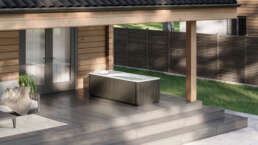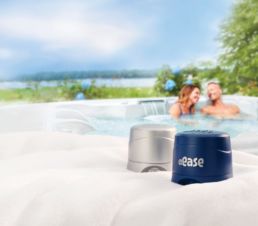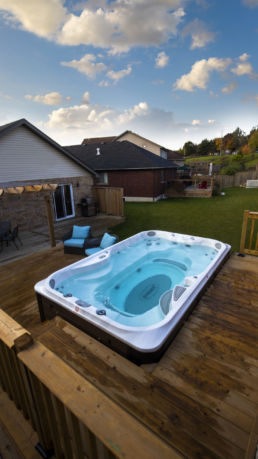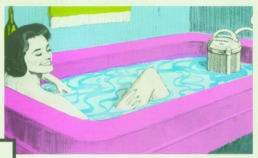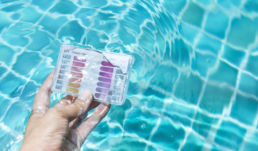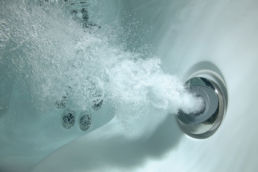Chill Out and Recharge: The Benefits of Cold Plunge Tubs You Didn’t Know About
Chill Out and Recharge: The Benefits of Cold Plunge Tubs You Didn’t Know About
Cold plunging has quickly become a wellness trend that people from athletes to wellness enthusiasts are embracing. Whether it’s for muscle recovery, boosting mental clarity, or simply a rejuvenating experience, the cold plunge offers a host of benefits you may not know about. But what if you could take this experience to the next level? Enter the Kodiak™ Cold Plunge Tub—a stylish, plug-and-play tub designed for the ultimate in cold therapy and relaxation. Let’s explore why this tub could be your new favorite tool for self-care.
What is Cold Plunge Therapy?
Cold plunge therapy involves immersing yourself in cold water, typically at temperatures around 40°F (4°C). This form of hydrotherapy has been used for centuries to improve circulation, reduce inflammation, and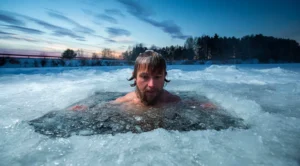 boost recovery after physical exertion. The immediate shock of cold water causes your blood vessels to constrict, and once you get out, they dilate, promoting healthy blood flow. It’s not only a physical reset but
boost recovery after physical exertion. The immediate shock of cold water causes your blood vessels to constrict, and once you get out, they dilate, promoting healthy blood flow. It’s not only a physical reset but
also a mental one, leaving you energized and focused.
Why Cold Plunging?
The benefits of cold plunging are backed by both science and experience. Here are a few reasons why this wellness practice has gained so much popularity:
- Speeds Up Muscle Recovery: Cold water helps reduce muscle soreness and inflammation, making it ideal for athletes or anyone engaging in regular physical activity.
- Improves Circulation: The constricting and dilating of blood vessels during and after cold plunging helps improve overall circulation.
- Boosts Mental Clarity: Cold plunges release adrenaline and endorphins, enhancing mental clarity and reducing stress.
- Strengthens Immune System: Regular cold exposure can boost immune response by stimulating white blood cell production.
Introducing the Kodiak™ Cold Plunge Tub
If you’re ready to experience the benefits of cold plunge therapy at home, the Kodiak™ Cold Plunge Tub is designed to make it easy, stylish, and effective. This plug-and-play model is built to be as versatile as it is functional, making it a great addition to both indoor and outdoor spaces.
Key Features of the Kodiak™ Cold Plunge Tub:
- Temperature Control: Offers an impressive range from 40°F to 104°F (4°C to 40°C), allowing you to enjoy both cold plunges and warm soaks.
- Deep-Soaking Design: With its spacious interior, the Kodiak provides plenty of room to fully immerse yourself and experience the full benefits of the plunge.
- Energy-Efficient Chiller: The tub uses R32 refrigerant with a 180g charge, providing eco-friendly and efficient cooling to keep the water at your desired temperature.
- Sleek, Insulated Build: The Kodiak features a synthetic grey cabinet with durable acrylic shell and non-slip EVA flooring for safety and comfort.
- Easy Maintenance: The plug-and-play design, coupled with a built-in exterior drain valve, makes maintenance a breeze. Its low-maintenance cabinetry keeps all the equipment neatly hidden, blending seamlessly with any environment.
Kodiak™ Cold Plunge Tub
Revitalize Your Mind and Body with the Kodiak™ Cold Plunge Tub
Learn more on the Kodiak Cold Plunge Tub
Jacuzzi®+ @ease = Clean Water
With convenient cartridges designed to fit in your Jacuzzi® spa, FROG Minerals and SmartChlor® Technology allows you to enjoy Fresh Mineral Water® that kills bacteria 2 ways with up to 75%* less chlorine and a lot less work! Learn more about the @ease system by watching the short video below:
How many times have you thought, “this hot tub is just too much work!” We set out to change that with FROG @ease – it gives you that “ahhh” feeling of relaxation and peace of mind. FROG @ease combines sanitizing minerals with SmartChlor® Technology to kill bacteria 2 ways. The result is Fresh Mineral Water® that’s silky soft with far less odors and the easiest water to maintain because it’s self-regulating. It knows when more sanitizing power is needed and automatically delivers it. Unlike normal chlorine that is used up when you get in, SmartChlor® continues to maintain the same level which is up to 75% less than hot tubs using Dichlor (standard hot tub chlorine). That’s why we call it self-regulating. It goes to work when the hot tub needs sanitizing so there are no frustrating yo-yo chlorine levels. This time-released method is also why less shock is needed to maintain the hot tub. Another major benefit of SmartChlor? No cyanuric acid buildup that makes water tough to balance and reduces the effectiveness of your chlorine.
Less Chlorine
Up to 75%* less chlorine with no frustrating yo-yo chlorine levels.
Less Shocking
Only shock once a month!
Self Regulates
Self-regulates for continuous crystal clear water.
Less Odors
Easy on hot tub surfaces with less odors.
- Unique form of chlorine that works only with FROG minerals
- It’s EPA registered
- Unlike dichlor it’s slow dissolving
- It’s self-regulating by automatically delivering more free chlorine when needed
- It maintains a consistent 0.5 – 1.0 ppm free chlorine level at all times
The Jacuzzi® @ease System is available on all Jacuzzi® J-300™, J-400™ and J-500™ Series spas with the in-line cartridge holder, and J-200™ Series spas with the floating system.
Swim Spas Provide fun and fitness all year round
In Central New York, many homeowners have considered purchasing a hot tub for the cold winters, but also long for a pool in the warm summer months. An economic way to receive the benefits of both a pool and a spa is with a swim spa. Not only do you get a hot tub spacious enough for exercise, but you can also use your swim spa all year long. Especially adjusting spas temp to a refreshing 76-80 degrees.
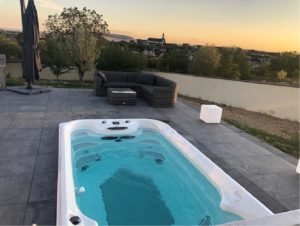
About
A swim spa is a large hot tub that offers a swim current for ultimate resistance swimming. Each varies in size, but average around 7 ft. x 14 ft. and 3-5 ft. deep. It can be used for exercises such as water aerobics, underwater running, strength training and swimming laps. Its unique size provides room to perform all four basic strokes. You can also use your swim spa for stress relief, relaxation and family fun.
Benefits
The swim spa provides functions that maximize its value. A standard spa can accommodate on average 4-6 people, whereas a swim spa can fit a dozen people comfortably. The compact space of a hot tub limits the amount of exercise options available, but in a swim spa you have plenty of space to perform your favorite exercise routine.
Features of the swim spa can be adjusted more easily than a pool. It is a smaller unit of water, allowing the temperature to change more rapidly at your control. You can even separate the temperature of the spa so that everyone is comfortable. When using the current you can regulate to a speed that best fits your needs. Increase the resistance for an intense cardio workout, or set the jets to low for a relaxing massage.
Installation
You can install a swim spa wherever the technical requirements can be accommodated: indoors, outdoors, above or in the ground. If you decide to move, the swim spa is a self-contained unit and can be transported to your new home. Swim spas are customizable by size, color, and light options. Plus they offer great features such as exercise equipment and stereo systems.
If you have been considering a pool or hot tub for your home and just can’t decide, consider exactly what you want to get out of your water oasis. If you’re looking to stay warm in the winter, cool in the summer, have exercising opportunities and have a great space for socializing then the swim spa could be a great fit for you. Check out our website at tarsonpools.com to stay informed on our spa sales or stop in today to discuss installing a swim spa at your home.
Shop our line of Jacuzzi Swim Spas.
The health benefits of a hot tub
The word spa is derived for the Latin “salus per aquam, which translates as “health from water.” There are many wonderful advantages to owning a spa, but did you know it provides health benefits beyond stress relief? Whether you have a chronic condition or just need a way to relax, a spa can help enhance your life and health. Here are some conditions that can be helped with a spa:
Troubled Sleeping
Spas are a great way to reduce stress, a common variable in sleep disorders. The decrease in body temperature when you exit the spa helps induce the feeling of tiredness. It is recommended you spend 15 minutes in a hot tub about 90 minutes before going to bed in order to improve the quality of your sleep.
Circulation and Blood Pressure
The massaging jets and warm water stimulate impulses of the nerves and help with blood flow, digestion and boosts your immune system. The heat also helps open up blood vessels, decreasing blood pressure.
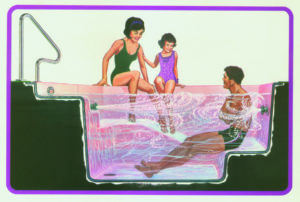 Improved Range of Motion
Improved Range of Motion
As we age, we lose our range of motion. This process is gradual for some and swift for others, depending upon factors such as genetics, activity level, injuries, and the presence of any medical conditions like arthritis.
Through regular usage, your hot tub can help you restore lost flexibility and slow the natural stiffening that comes with age. The warm water of your spa works to create hydrostatic pressure—the pressure caused by the weight of fluids—on the body. This reduces joint inflammation, which in turn aids mobility. The buoyancy experienced in a spa relieves muscle tension, allowing your joints and muscles to relax and become more pliable. While soaking, you can take advantage of your relaxed state and your water-induced buoyancy to gently practice flexibility exercises.
Muscle Tension and Joint Pain
The warm temperatures of a hot tub relax your muscles and the buoyancy of the water takes pressure off the joints. These can help with pain or discomfort associated with arthritis, fibromyalgia, chronic fatigue syndrome and other conditions. Massaging jets relieve pressure on your nerves and reduce tension in your body. Having multiple jets saves time by focusing on different areas at one time and you can control their intensity to accommodate your body’s needs.
Type 2 Diabetes
Participating regularly in hot tub therapy can help with symptoms of Type 2 diabetes, such as improving sleep, lowering your blood sugar, and losing weight. The buoyancy and water resistance contribute to light exercise routines that lead to weight loss and heart health. Consult with your doctor before trying hot tub therapy in order to ensure proper practices.
There are many other benefits of using a hot tub such as releasing contaminants through your pores, providing a sense of well-being, and it can be a great way to bond with your loved ones.
If any of these benefits resonate with you, a spa is a great investment for your life. Come in or give us a call so we can help you pick out a spa that best meets your needs.
Let's Explore the History of Chlorine in Pools
For the last hundred years or so, chlorine (in one form or another) has been the go-to option for pool and spa sanitation. But, have you ever wondered why or how? Over this series of posts surrounding the history of chlorine and its use in pools we're going to dive into how chlorine became the de-facto choice for water treatment, explore its role in the rise of the swimming pool, and offer some insight on newer technologies that can help to ween our dependence, and exposure to chlorine.
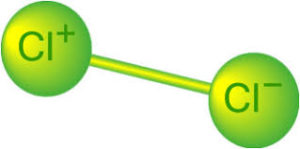
While there's plenty of evidence to show that the Ancient Romans and Greeks were prolific users of "public baths" (early precursors to the swimming pool), for much of western history, bathing was performed only infrequently and very few people even knew how to swim. In the nineteenth century, British enjoyed public baths in India and Japan and brought the modern concept of the swimming pool back home to England. Prior to the use of chlorine, water wasn't really "treated" at all. It was filtered through large sand filters and changed often as it became foul. In 1894, however, it was first suggested to use chlorine to disinfect water to make it "germ-free", and following a serious outbreak of typhoid fever caused by a faulty sand filter in England in 1905, chlorination became the norm. The practice made its way to the US via New Jersey's Boonton Reservoir, in 1908. By the mid-1900's waterworks engineers had mastered the use of chlorine and filtration, and educators and health professionals appreciated the value of swimming for physical fitness. All of the elements of the "modern" swimming pool were in place, and in 1910 Brown University's 70,000-gallon Colgate Hoyt Pool was chlorinated by graduate student John Wymond Miller Bunker and became the first pool to use chlorination as its primary method of disinfection. He published his findings in a paper called "Hygenie of the Swimming Pool" in the American Journal of Public Hygiene, Bunker applied hyperchlorite of lime (calcium hypochlorite) to 2L of pool water at a concentration of 1 ppm. According to the New York Times, the pool remained sterile for four days.

Chlorine kills bacteria though a fairly simple chemical reaction. The liquid chlorine solution you pour into the water (sodium hypochlorite) breaks down into many different chemicals, including hypochlorous acid (HOCl) and hypochlorite ion (OCl-). Both kill microorganisms and bacteria by attacking the lipids in the cell walls and destroying the enzymes and structures inside the cell, rendering them oxidized and harmless. Once the HOCl and OCl- are done cleaning the pool, they either combine with another chemical, such as ammonia, or are broken down into single atoms where they pose little to no health risk to us.
While there's more to "dive into" on the science behind how we keep your water safe and clean, keep posted for more posts as we explore pool and spa water treatment.
The Therapeutic Uses of the family spa
Muscle relief is one of the most often thought of therapeutic uses for spas, but did you know owning a hot tub can help you get a better night’s sleep and other healthy results?
Therapeutic Results:
- A Better Night’s Sleep:
The National Sleep Foundation, which offers sleep-related education and research, included this in a Facebook post on Healthy Sleep Tips: “Establish a regular, relaxing bedtime routine such as a warm soak in a whirlpool bath or hot tub and then reading a book or listening to soothing music.”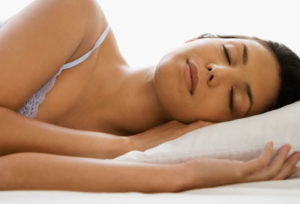
- Rejuvenation & Better Circulation:
Warm water or Hydrotherapy promotes stress release and can ease minor aches and pains. The heat of the water helps increase blood circulation which is essential to getting your body the vitamins, nutrients, and oxygen it needs to function. Relaxing in a hot tub can increase vasodilatation which allows vitamins and minerals to more easily flow through the bloodstream, helping soothe sore and overworked muscles.
- A Bonded Family:
These days with activities and tech gadgets ruling our days as well as our children’s owning a hot tub can be a great way to bond together as a family without distractions. A hot tub offers a place to connect and relax as a family. Parents can remove stress from their day and the kids love to play. Having trouble connecting with your teen? The family hot tub can offer a great time to talk with your teens without the distraction of computers, cell phones, and video games.

- Less Anxiety:
In the early 1900s, mental institutions in the United States used whirlpool tubs and other forms of hydrotherapy to calm agitated, out-of-control patients. According to “A History of Somatic Therapies,” published by the Veterans Administration Mental Illness Research and Clinical Center, doctors in the 1920s were able to document positive physiological changes when patients were treated with submersion in a special whirlpool tub. The water flow and temperature were adjusted by an attendant, and notable changes in blood pressure, pulse, and respiration were observed and documented in the agitated patients. Similarly, whirlpool therapy can alleviate the stress and anxiety you may be experiencing from work or family issues. A demanding career and the search for a healthy balance between work and family are reasons to use a day spa to help you unwind. The day-spa experience can be created at home with a whirlpool tub, aromatherapy sea salts, candles, and soft music while you soak and relax. (source Livestrong.com)

